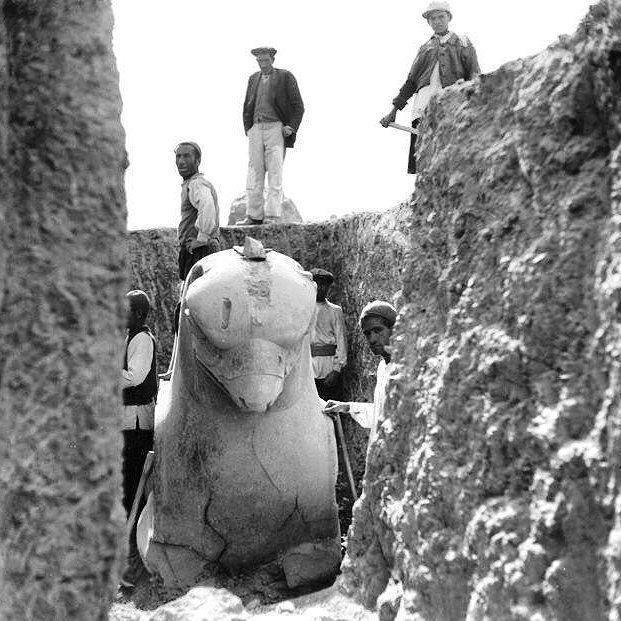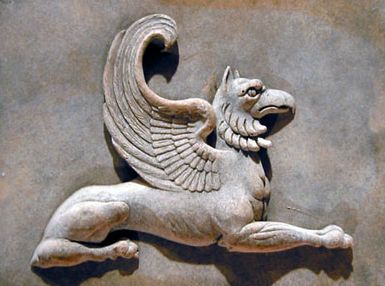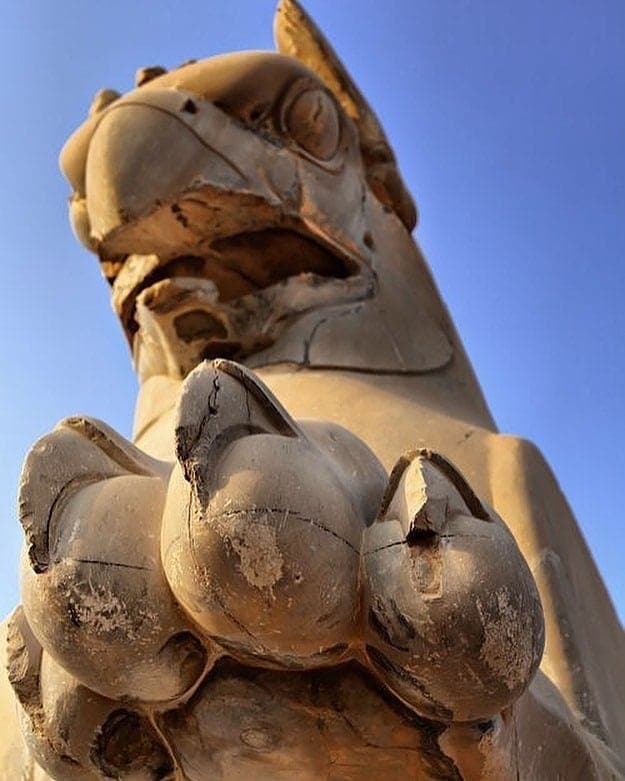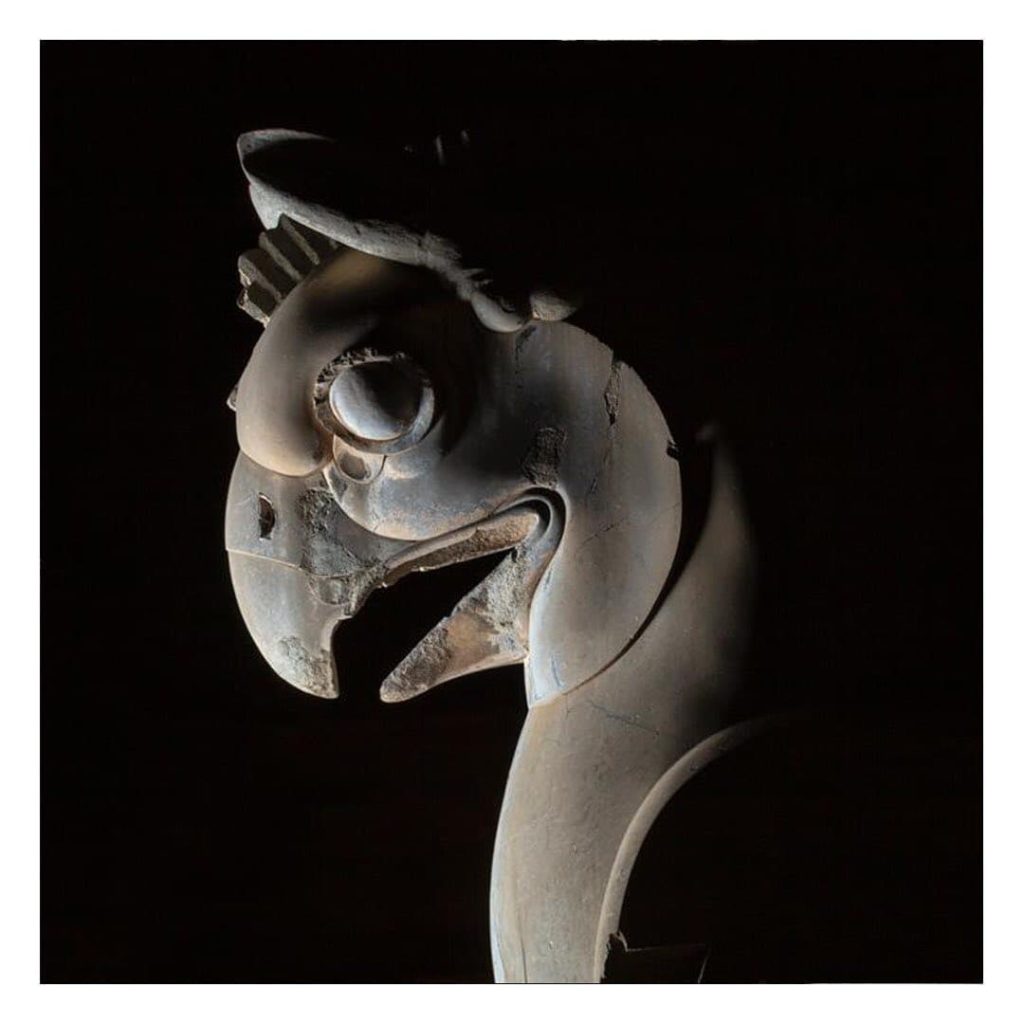Persian Gryphon History

Persian Gryphon Mythodoly
Persian Gryphon(Griffin-Griffon), also known as the Shirdal (lion-eagle in Persian), is a mythical creature with a rich history in ancient Iranian art and culture. It is a composite creature with the body of a lion and the head and wings of an eagle. It is believed to have originated in ancient Persia, where it was depicted in various forms of art, including sculptures, reliefs, and textiles and also often associated with royalty and power, and was believed to be a guardian against evil and witchcraft.
Persian Griffin is also known as the “bird of Homa,” a mythical bird that is associated with good fortune and happiness. It is often depicted in Iranian literature and folklore, and is considered to be a symbol of prosperity and success. It is a fascinating and iconic creature with a long and rich history. It continues to be a popular symbol in Iranian culture, and is often used in contemporary art and design.

In Persian mythology, the Griffin was often associated with the mythical bird Simorgh, a creature of wisdom and transformation. Both were believed to possess healing powers and the ability to grant wishes. The Griffin was also seen as a protector of the righteous and a punisher of the wicked.
In Greek mythology, griffins were associated with the gold-rich mountains of Scythia, where they fiercely guarded their precious deposits from the one-eyed Arimaspians. This association with wealth and protection has endured, making the griffin a popular symbol in heraldry and art, often representing strength, courage, and the defense of valuable possessions.
Origins and Symbolism



The origins of the Persian Griffin can be traced back to the Achaemenid Empire (550-330 BCE). It was believed to be a guardian of treasures and a symbol of royalty. The combination of the lion and eagle, representing land and sky respectively, signified the Griffin’s dominion over both realms. It was also associated with the concept of Fravarane, protective spirits that guarded individuals and communities. Here’s a breakdown of its origins and evolution across different cultures:
• Near East (4th millennium BC): The griffin’s roots can be traced back to the Near East, where it likely emerged as a symbol of power and protection.
• Ancient Egypt: Griffin-like creatures with four legs and a beaked head appeared in Egyptian art as early as the Early Dynastic Period (c. 3300–3100 BC). These creatures were often depicted guarding tombs and treasures.
Greek and Roman Mythology
• 2nd millennium BC: The griffin spread to Greece and other parts of the Mediterranean. It was associated with gold and often depicted guarding treasures, particularly those of the one-eyed Arimaspians.
• Classical Period: Griffins became popular motifs in Greek and Roman art and literature. They were seen as powerful and majestic creatures, often associated with the sun and sky.
. Medieval Europe:
• Middle Ages: The griffin continued to be a popular symbol in medieval Europe. It was often used in heraldry and architecture, representing strength, vigilance, and courage.
• Alchemy: Griffins were also associated with alchemy, symbolizing the transformation of base metals into gold.
. Modern Times:
• Symbolism: The griffin remains a powerful symbol in modern times, representing strength, courage, and protection. It is often used in logos and heraldry.
• Fantasy and Literature: Griffins have become popular figures in fantasy literature and role-playing games, further cementing their place in popular culture.
Key Symbolic Meanings of the Persian Gryphon:
Shirdal’s symbolism extends beyond its formidable appearance. Here’s a breakdown of its key symbolic meanings:
Power and Strength:
• Combination of Kings: The griffin embodies the power of both the lion, the king of the beasts, and the eagle, the king of the birds. This dual nature symbolizes supreme power and authority.
• Guardianship: Griffins are often depicted as guardians of treasures, sacred sites, and divine entities. This role highlights their strength and vigilance in protecting valuable possessions.
• Divine Connection: In some cultures, griffins are associated with deities like Zeus or Apollo, further emphasizing their connection to divine power.
Wisdom and Knowledge:
• Aerial Perspective: The eagle’s head allows the griffin to see from a higher perspective, symbolizing wisdom, insight, and a broad understanding of the world.
• Guardians of Secrets: Griffins’ association with guarding treasures can also be interpreted as guarding knowledge and secrets, signifying their role as protectors of wisdom.
Courage and Vigilance:
• Fearless Nature: The griffin’s composite form suggests a fearless and courageous nature, capable of overcoming any challenge.
• Eternal Watchfulness: As guardians, griffins are always vigilant, symbolizing a constant state of alertness and preparedness.
Balance and Harmony:
• Yin and Yang: The combination of terrestrial (lion) and celestial (eagle) elements in the griffin represents a balance between earthly and spiritual forces.
• Integration of Opposites: The griffin’s harmonious blend of different attributes symbolizes the integration of seemingly contradictory qualities.
Transformation and Rebirth:
• Phoenix-like Qualities: In some interpretations, the griffin shares similarities with the phoenix, symbolizing rebirth, renewal, and the cyclical nature of life.
Persian Gryphon In Persian Art and Architecture:
The Gryphon is a prominent motif in Persian art and architecture, particularly during the Achaemenid and Sassanian empires. It can be found in various forms:
• Sculptures: Gryphons were carved in stone and used as architectural elements in palaces, temples, and tombs. These sculptures often served as guardians of sacred spaces or symbols of royal power.
• Reliefs: Gryphons were depicted in relief sculptures on walls and ceilings, often guarding sacred spaces or symbolizing the power of the king. These reliefs showcased the intricate craftsmanship and artistic skill of Persian artisans.
• Textiles: Gryphons were woven into textiles, used for clothing, tapestries, and other decorative purposes. These textiles often featured elaborate designs and vibrant colors, showcasing the cultural and artistic richness of Persia.

Legacy
The Persian Griffin continues to be a powerful symbol in Iranian culture. It represents the country’s rich history and mythological heritage. The Shirdal can still be found in modern Iranian art and design, reminding us of the enduring legacy of this majestic creature. The Persian Gryphon’s association with Iran’s rich cultural heritage makes it a fascinating subject for travelers interested in the country’s history and mythology. While you won’t encounter a real-life Gryphon during your visit, you can explore numerous historical sites where these creatures were once revered.
Visiting Iran offers a unique opportunity to encounter the rich cultural heritage that includes the Persian Gryphon. The country boasts numerous historical sites, museums, and archaeological excavations where you can witness the Gryphon’s enduring legacy.
Some of the key places to explore the Persian Gryphon’s connection to Iran include:
- Persepolis: The magnificent ruins of the ancient Persian capital, Persepolis, feature numerous depictions of Gryphons on architectural elements and reliefs.
- Iran National Museum: Located in Tehran, this museum houses a vast collection of artifacts, including many with Gryphon motifs.
- Vakil Bazaar, Shiraz: This vibrant bazaar in Shiraz offers a glimpse into traditional Iranian culture and craftsmanship. You may find jewelry and other items adorned with Gryphon designs.
Visiting Iran allows you to immerse yourself in a land steeped in history and mythology. By exploring its ancient sites and cultural treasures, you can gain a deeper appreciation for the Persian Gryphon and its enduring significance in Iranian art and culture.
Iran Travelers: Exploring the Land of the Persian Gryphon
Iran Travelers, on the other hand, are real-world explorers who venture into the heart of Iran. This beautiful country, rich in history, culture, and breathtaking landscapes, is a captivating destination for travelers worldwide.